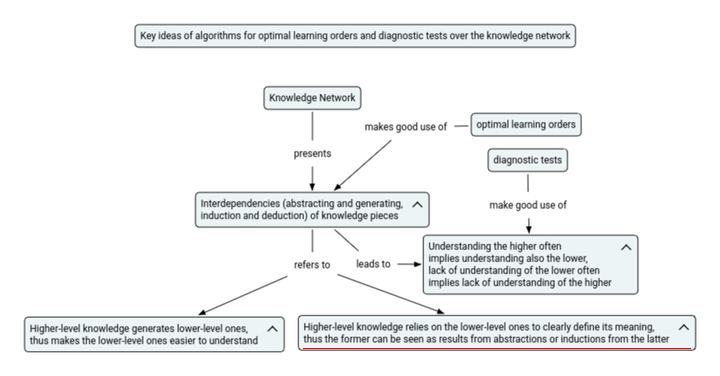Algorithms for optimal learning orders and diagnostic tests over the human knowledge highway

Once the dependencies between the concepts contained in the concept network are known, based on the learner’s existing foundation and learning goals, similar to the actual navigation of real-world highways, one may find efficient learning orders, with which one may navigate better over the knowledge highway. The learning order algorithm on the knowledge network (or conceptual network) refers to designing such algorithms to find out such the more efficient learning orders. Typically, a high-efficiency learning order requires learn first the relatively low-level basic concepts, concepts that are required by more high-level concepts, and concepts with high usage frequency.
The diagnostic testing algorithm on the knowledge network (or concept network) refers to inferring which concepts the subjects understand or do not understand by testing as few concepts as possible. Testing all is too costy, and random sampling can only be used for evaluative tests. In fact, utilizing the dependencies between the concepts contained in the concept network, we can get better test algorithms. Take a pair of closely related concept AB, which are directly connected in the knowledge highway, as an example: As long as you know A, you know B with a high probability, or as long as you don’t know B, you don’t know A with a high probability. We can see that clearly such an correlation can be used by testing algorithms. Moreover, such testing algorithms are adaptive, that is, the previous testing results provide the basis for the selection of the subsequent testing content.
The designed learning order algorithm and diagnostic testing algorithm also need to be experimentally validated. The former requires to be done in experiments of teaching and learning. The experimental test of the latter can be carried out relatively independently.
Furthermore, if such a testing algorithm succeeds, itself can become a product, that is to provide testing services for all knowledge domains as long as the concept network of the domain is already constructed. Of course, the testing algorithm can also be combined with the learning order algorithm to assist in personalized learning.